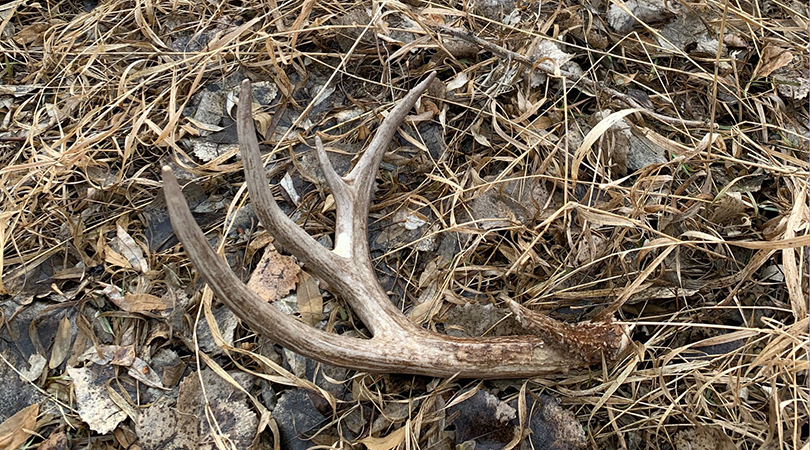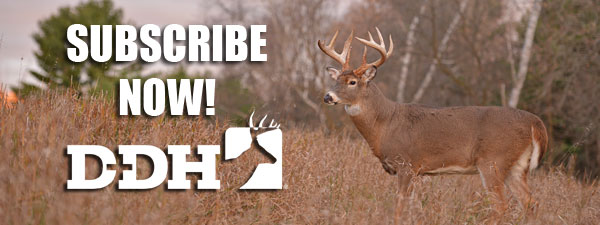When the weekend rolls around, the birds are singing, the smells of spring fill your nostrils and all the bucks have dropped their antlers, you may be ready to just jump out of your truck and run yourself ragged in search of shed antlers. I know I’ve had that feeling where I just want to tear across the fields and go! But it pays to take a little time to break down your shed hunting ground and form a quick strategy.
The reality is, we only have a finite amount of time to walk. So the first thing I like to do is eliminate unproductive ground. A little scouting can help you with that. In winter, pay attention to which fields deer feed in and which ones they don’t. If you don’t have a chance to scout ahead of time, give a quick look for deer tracks and droppings. If there’s nothing recent, you might want to skip the area and look for fresher sign.

Knowing the kinds of plants deer feed on and the cover they like to bed in can also help you skip over unproductive ground. For example, one area I like to hit has an ash forest in it. Ash trees really don’t provide good food for deer. When they go through the ash forest, they’re mostly traveling from Point A to Point B to get to better feeding and bedding areas, so the only time I spend there is walking down their trails doing what the deer do — just passing through to get to more productive spots. On one parcel I like to walk, skipping the ash forest eliminates half the property, which gives me more time to focus on more productive areas.
It also helps to compartmentalize the property so you can cover it more thoroughly. It can be tempting to just hop on a deer trail and go. And sometimes you’ll get into a spot that looks amazing and the more you walk, the better it gets. That’s a great problem to have! The trick is, how do you cover it effectively? Break up the area into natural boundaries. Shed hunt your way up to a fenceline, creek or field, then turn and make another pass back. That way, you have some sense of how far you’ll go and how much time you can dedicate to that area. You might realize that you don’t have enough time to cover it thoroughly, and you’ll have to come back another day. That’s fine. Better to be thorough than to run around willy-nilly and miss antlers. Keeping your GPS running while you’re walking can also show you exactly where you’ve been (and where you haven’t) and help you grid an area more efficiently.

In some types of cover, such as cornfields, you’ve got no choice but to walk it a few rows at a time. It’s not fun, but it can be effective if deer were feeding in the area heavily.
Don’t forget your competition. On public land, hit the best, most obvious spots first, preferably during the week if you can. Then, while everyone else is walking ground you’ve already hit on the weekend, you’ll be walking other areas that haven’t been walked recently.
Realize not all competition has just two legs. Squirrels devour sheds if they can find them. Hit oak forests first to get to sheds before they’re chewed. Sheds have less chance of being eaten in crop fields, so hit those spots later.
A final tip is to keep direction in mind. In cold regions, deer like to bed on the south side of trees or deadfalls to soak up the sun’s warmth. I really like to travel east and west, while concentrating my efforts on the south edge of every tree that I think could serve as a bedding site. In addition, if you can, walk with the sun at your back so you can see better.
— Joe Shead is a hard-core outdoorsman and a dedicated shed hunter. Professionally, Joe is an outdoor writer and a former managing editor of Deer & Deer Hunting magazine. His years of shed hunting experience inspired him to write the first full-length book about the topic. “Shed Hunting: A Guide to Finding White-Tailed Deer Antlers” is recognized as the ultimate guide to finding whitetail sheds and can be purchased on his website.


